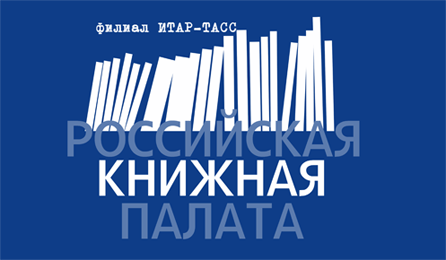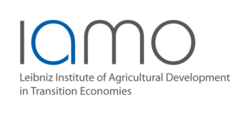Pavlyukevich R.V., Vasyutin I.A. Dynamics of the number of labor resources in the Krasnoyarsk Region agriculture under N.S. Khrushchev’s transformations // The Russian Peasant Studies. 2020. V.5. №4. P. 131-141.
DOI: 10.22394/2500-1809-2020-5-4-131-141
Annotation
The article considers the impact of Khrushchev’s reforms on the dynamics of the number of the able-bodied population in rural areas of the Krasnoyarsk Region. During the period under consideration, there were two contradictory trends in the Krasnoyarsk Region. On the one hand, under the virgin-land campaign, there was an inflow of immigrants from other regions of the Soviet Union. According to some researchers, this planned wave of immigrants significantly improved the situation in the Krasnoyarsk Region agriculture and partially solved the problem of shortage of workers, which was determined by the campaign for the introduction of virgin and fallow lands into agricultural circulation. On the other hand, urbanization continued, including the large-scale industrial development of the region, which needed an inflow of the able-bodied population to its cities. As in other regions of the country, the main donor of the able-bodied population for the industry was the village. Thus, Khrushchev’s transformations determined a paradoxical situation: the village was receiving new labor resources and at the same time was losing population that moved to the cities with the industrial facilities. The inflow of new population into the village could not compensate for the loss of labor resources in agriculture.
Keywords
labor resources, modernization, rural population, urban population, Krasnoyarsk Region, N.S. Khrushchev’s reforms
About the authors
Pavlyukevich Ruslan V., PhD (History), Associate Professor, Department of History and Political Sciences, Krasnoyarsk State Agrarian University. 660012, Krasnoyarsk, Semaphornaya St., 189a.
E-mail: This email address is being protected from spambots. You need JavaScript enabled to view it.
Vasyutin Ivan A., Master's Student, Department of General History, Siberian Federal University. 660041, Krasnoyarsk, Svobodny Pr., 79.
E-mail: This email address is being protected from spambots. You need JavaScript enabled to view it.
Merl S. Agricultural reforms in Russia from 1856 to the present: Successes and failures in the international comparative perspective // The Russian Peasant Studies. 2020. V.5. №2. P. 56-87.
DOI: 10.22394/2500-1809-2020-5-2-56-87
Annotation
Despite its initial backwardness, the agricultural sector played a decisive role in the Russian/Soviet history. Until the 1950s, it was the main sector of occupation; it had contributed greatly to the gross domestic product and gross value added until forced collectivization destroyed huge agricultural resources. The article argues that emancipation paved the way for agricultural modernization by promoting a new agricultural structure based on the market and the skills of the heads of large-scale and family farms. The author identifies three Russian/Soviet approaches to the agrarian reform (1856–1928, 1929–1987, from 1987) in terms of contribution to the modernization of agriculture and of catching up with the developed countries. The article argues that until 1928 and (after the agricultural depression of the 1990s) from 2000, Russia was successful in both modernization and catching up, while Stalin’s forced collectivization at first led to stagnation. After the World War II, forced collectivization prevented any “green revolution” (i.e. application of the agricultural scientific research findings). Under the state command system in agriculture, poor mechanization did not increase the labor productivity. Although Russia was known for agricultural surpluses before collectivization, the late Soviet Union became a major grain importer. Only the reform that started in 1987 removed the state command system to make the agricultural producers masters of their fields again, which led to a considerable increase in agricultural productivity since 2005. Basing the reappraisal of the agrarian reforms on the recent successes, the article likes to encourage further discussion. It proposes to regard the use of the available rural labor force, the quality of the industrial inputs in agriculture and the extent to which the producers were allowed to be masters of their agricultural production as the most appropriate criteria for assessing the agrarian reforms’ results.
Keywords
agrarian reform, efficiency of agricultural production, emancipation, forced collectivization, green revolution, mechanization of agriculture, modernization, peasant farms, rural underemployment, socialist industrialized agriculture, Alexander II, Stalin, Brezhnev, Khrushchev, Gorbachev, Putin
About the author
Merl Stephan, DSc (History), Professor, Bielefeld University; Universitätsstr., 25, 33615, Bielefeld, Germany.
E-mail: This email address is being protected from spambots. You need JavaScript enabled to view it.
The agrarian revolution of 1917 in Russia: Is it worth studying economic history and forgetting the sad end?
Mar 23 2019Kuznetsov I.A. The agrarian revolution of 1917 in Russia: Is it worth studying economic history and forgetting the sad end? // The Russian Peasant Studies. 2019. V.4. №1. P. 22-44.
DOI: 10.22394/2500-1809-2019-4-1-22-44
Abstract
The article considers the possible further studies of the economic history of agriculture and the peasantry of the Russian regions in 1861–1914. The author analyzes the theory of Russian revolutions developed by Boris Mironov and identifies logical contradictions in his argumentation. This theory overvalues the significance of random and subjective factors and underestimates the agrarian overpopulation and economic contradictions determined by the agrarian development. The author’s criticism of the “optimistic” paradigm in the economic history of post-reform Russia outlines the objectives of the study of agricultural development and its social consequences for the peasantry. The article proposes to discuss the idea that economic progress and growth of agricultural production in the Black-Earth regions of the South and South-East with their low production costs were the key factors of the crisis due to the relative overproduction of grain in Russia. Many small peasant farms in the old agricultural center could not compete in the grain market and, thus, were pushed out of it and marginalized, reinforced the natural-consumer activities and lost incentives for intensification of production. Market restrictions determined by the overproduction of grain became an important factor of agrarian overpopulation in the central regions. Institutional constraints that existed long before the Stolypin reform were aggravated by agrarian overpopulation that also created the social base for revolution. The agrarian revolution of 1917 was to strengthen the position of the family-labor economy by eliminating payment for the access to land as the main factor of production.
Keywords
history of Russian revolutions, agrarian revolution, agrarian overpopulation, peasant economy, modernization, B.N. Mironov
About the author
Kuznetsov Igor A., PhD (History), Senior Researcher, Russian Presidential Academy of National Economy and Public Administration. 119571, Moscow, prosp. Vernadskogo, 82.
E-mail: This email address is being protected from spambots. You need JavaScript enabled to view it.





















